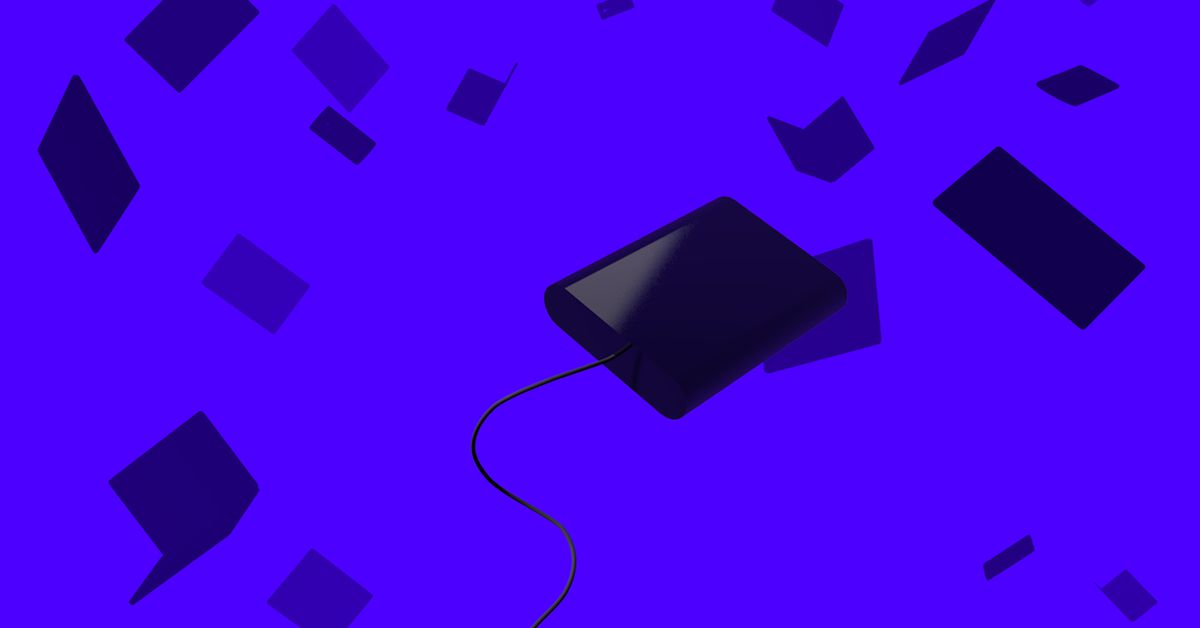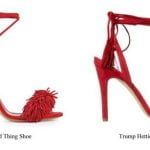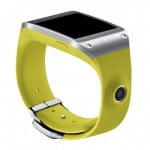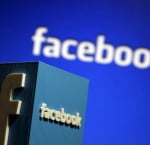 Steven Yang quit his job at Google in the summer of 2011 to build the products he felt the world needed: a line of reasonably priced accessories that would be better than the ones you could buy from Apple and other big-name brands. These accessories — batteries, cables, chargers — would solve our most persistent gadget problem by letting us stay powered on at all times. There were just a few problems: Yang knew nothing about starting a company, building consumer electronics, or selling products.
Steven Yang quit his job at Google in the summer of 2011 to build the products he felt the world needed: a line of reasonably priced accessories that would be better than the ones you could buy from Apple and other big-name brands. These accessories — batteries, cables, chargers — would solve our most persistent gadget problem by letting us stay powered on at all times. There were just a few problems: Yang knew nothing about starting a company, building consumer electronics, or selling products.
“I was a software engineer all my life at Google. I didn’t know anyone in the electronics manufacturing world,” Yang tells me over Skype from his office in Shenzhen, China. But he started the company regardless, thanks in no small part to his previous experience with Amazon’s sellers marketplace, a platform for third-party companies and tiny one- or two-person teams interested in selling directly to consumers. He named the company Anker, after the German word for ship anchor.
Anker has since become the most popular brand of portable battery packs on Amazon.
Portable chargers had a bit of a standout moment last summer, when players of the wildly-popular and battery-hogging Pokémon Go could be seen roaming the streets, their phones constantly plugged in. But these accessories have existed for years as a remedy for our battery woes since the standard smartphone tends to last no more than a day on a single charge. So in airports, the back of cabs, and on city streets we’re plugging into lithium-ion slabs in our pockets and bags to stay connected. The market for portable battery packs generated $360 million in the 12 months ending in March, 2017 in the US alone. The brands behind these packs are largely anonymous — Kmashi, Jackery, and iMuto — and they often stay that way.
Except Anker. The steady rise of the company’s profile is proof that it’s possible to meet one very specific consumer need and ride that wave as it continues to ripple out to other markets. A majority of Anker’s sales come from cables and wall chargers, and it’s now moving into the smart home and auto market — anywhere a plug and a cable can solve a problem.
Yang and his team started a company with the sole purpose of selling a better third-party accessory. But they stumbled onto a more lucrative reality: mobile phones, once niche luxury items, are now ubiquitous centerpieces of our digital lives. Each of these phones, and all the products that connect to them, need their own cable and plug. And each and every day these devices die before we want them to.
/cdn0.vox-cdn.com/uploads/chorus_asset/file/8554507/jbareham_170517_1682_0003.0.jpg)
If there’s anything you should know about smartphone development over the last ten years, it’s this: batteries are not lasting longer. Phones may be thinner and faster, with larger screens and better cameras, but they don’t stay powered for longer than a day, perhaps 36 hours at best.
The culprit is the fundamental science of lithium-ion batteries, which are tremendous at storing energy but only within limited size and capacity constraints.
The lithium-ion batteries we have today operate at about a fifth of their potential storage capacity, says Lynden Archer, a professor of chemical engineering at Cornell University. And yet that’s still at about 90 percent of the maximum potential today’s battery science allows. “A breakthrough would require a new paradigm,” he says.
That stagnation has allowed Anker to flourish. “A huge part of Anker’s success is the fact that our batteries don’t last long enough,” says Joanna Stern, a technology columnist and gadget reviewer for The Wall Street Journal. “They saw that accessories needed to be made to address customers’ pain points. They’re making the chargers, the cases, the cords — and they’re making it for affordable prices so you can have one of these in every place you are.”
Mobile battery packs weren’t the company’s initial goal. In the late 2000s, Yang identified a consumer need not being met: well-built, reliable laptop battery replacements. “You have a Dell or HP laptop — let’s assume you got it in 2009 — and in 2011 the battery is dying and you want to get a new one,” he says. Back then you had two choices: buy directly from Dell or HP, with a high price tag, or buy a white-label battery that’s cheap but poorly made. “Which one do I want to buy?” asks Yang. “The answer is neither of them.”
Yang saw a desire for a better type of accessory — one that wouldn’t cost as much as a replacement straight from the original manufacturer, but that would be of a high enough quality to earn consumers’ trust. Before he could sell that product, he needed to figure out how to make it.
It was a long and painful process. After he quit his job at Google in July of 2011, Anker took 12 months just to prototype its first laptop battery. That was even after Yang and the core team moved to Shenzhen to find reliable manufacturing partners. “I knew that if I stayed in California and had people FedEx me prototypes in a week, it was just not going to work,” he says.
Many hardware companies, especially crowdfunded ones in the US, learn that lesson the hard way, by missing deadlines and hitting snags that lead to months-long delays. A solid supply chain is so crucial to a hardware company’s survival that there’s an entire consulting industry around helping startups find suppliers and set expectations.
Critical to avoiding these pitfalls was Dongpong Zhao, Google’s then-head of sales in China. Zhao joined Anker in early 2012, and helped Yang build out the company’s supply chain. Anker was made up of around ten people at the time. “Think of it as a small family business instead of like an actual company,” Yang says. The company tirelessly built out a supply chain in its first year and began testing its first products — the laptop chargers and batteries it would begin selling direct to consumers on Amazon.
From there, Anker ventured into smartphone batteries with a replacement unit for the HTC Sensation. “We were able to make cellphone battery cells that actually had slightly better capacity,” Yang says. “That got us quite the reputation.” Early on, Anker developed close relationships with suppliers in Asia, including Panasonic and anode supplier BTR, to help test and quickly develop new batteries.
Yang says he and Anker’s small team “definitely saw the explosion of smart devices” as its biggest and most obvious opportunity, and Anker started aggressively expanding into portable battery packs, wall chargers, and cables. By the end of 2012, after shifting more resources toward portable chargers, Yang says Anker went from selling 100 to 1,000 products per day.
“The challenge wasn’t selling products,” Yang says. “It was making products and making sure they were high-quality as well. That’s why we spent a majority of our effort on R&D and product development.” The company does a majority of its sales directly to consumers over Amazon Marketplace, where a combination of strong reviews, low prices, and prominent placement in search rankings can turn a single product into a lucrative line.
For the accessories market, which tends to piggyback off trends in mainstream consumer electronics, a true breakthrough is rare. But Anker found one in charging, based on the realization that while batteries may not be improving, charging time certainly was. According a study conducted last year by PhoneArena, it took more than two hours on average to charge a device to 100 percent in 2013. Today, it can be done in almost half the time.
So Anker set out to make the fastest chargers available.
/cdn0.vox-cdn.com/uploads/chorus_asset/file/8557419/jbareham_170517_1682_0138_v02.jpg)
Take the PowerPort 5, a matte black rectangle no larger than a deck of playing cards, with five USB ports. When it was first introduced in 2015, it was the only accessory on the market capable of charging five devices simultaneously at optimal speed. Or the company’s standard PowerCore portable charger, roughly the size of a credit card and just under one inch thick — a white block encasing 10,000mAh of lithium-ion battery cells. It has four pinholes that light up in LED blue when you press an elliptical button on the top to check its remaining charge. It can refill a depleted iPhone 7 in just over 60 minutes nearly four times over before it needs to be recharged.
Most Anker charging products have one signature: the PowerIQ logo. Launched in 2013, the company’s proprietary charging standard is now present on nearly all of its batteries and wall plugs. The technology, carried by a small chip inside each charger, identifies whatever device is being plugged in, be it an iPhone 7 Plus, Google Pixel, or an iPad Pro 9.7-inch, in order to detect and deliver the maximum current the product allows. Anker says the technology can shave hours off the amount of time it takes to reach a full charge. A next-generation version of the chip, a sequel to PowerIQ, is slated to start shipping in new Anker charging products later this year, allowing for smaller and lighter accessories.
/cdn0.vox-cdn.com/uploads/chorus_asset/file/8557431/jbareham_170517_1682_0144_v02.jpg)
On top of its products’ technical advantages, Anker banks on looks to make its chargers stand out. Brand manager Elisa Lu says every device’s packaging is carefully thought out from the moment customers receive the product, to when they open it and use it. Devices come in a white and light-blue box with the name Anker printed in all caps across the front. Inside is a meticulously packaged arrangement of lightweight cardboard. Anker products carry that new-gadget smell — a blend of peculiar odors from the evaporation of chemical compounds in the plastics and the epoxy coatings of the device.
Beside its red cables, which Anker offers in both standard and braided nylon versions, and a single one-off red battery pack, the company sells products in only two color options: black and white. All this has a strategic business purpose. “When our consumers receive our products, we want to make sure they know they are getting it from a reliable and trustworthy company,” Lu says. Brand trust is a pivotal consideration when purchasing what may seem like random electronics off Amazon.
Inside the the box with Anker’s larger products, you’ll also find a small square piece of paper with two questions: are you happy, or are you unhappy? If you’re unhappy, a block of text instructs you to contact Anker customer support via phone, email, or on its website. If you’re satisfied, it asks you to tell your friends or family. Better yet, leave an Amazon review.
/cdn0.vox-cdn.com/uploads/chorus_asset/file/8554505/jbareham_170517_1682_0059.0.jpg)
In many ways, Anker’s success is born from the failures of premier manufacturers like Apple and Samsung. Where those companies introduce points of friction — like ever-thinner devices with short battery lives — Anker offers a remedy.
“My feeling is that Anker is a success because Apple offers such subpar and expensive accessories,” says Stern, who’s often recommended Anker products in her WSJ column. It may be surprising that Apple sat idly as the accessory market ballooned around it; it took the company years to develop its own battery case for the iPhone to compete with Mophie. But Apple has always favored high margins on premium products, even the cables and earbuds it sells in the Apple Store.
This has given ample room to companies like Anker, with the low overhead of an e-commerce business, to sell similar products of near-identical quality for $10 to $20 cheaper. And where Apple and others failed to develop products of their own like multi-port wall plugs and portable chargers, Anker saw the opportunity and capitalized on it. The company is quick to fill gaps created by smartphone manufacturers. When Apple removed the headphone jack on the iPhone 7, for instance, Anker saw a giant opportunity to begin producing new dongles and other cable adapters to help consumers adjust.
But mastering Amazon was the real key to securing Anker’s future.
From there, Anker ventured into smartphone batteries with a replacement unit for the HTC Sensation. “We were able to make cellphone battery cells that actually had slightly better capacity,” Yang says. “That got us quite the reputation.” Early on, Anker developed close relationships with suppliers in Asia, including Panasonic and anode supplier BTR, to help test and quickly develop new batteries.
Yang says he and Anker’s small team “definitely saw the explosion of smart devices” as its biggest and most obvious opportunity, and Anker started aggressively expanding into portable battery packs, wall chargers, and cables. By the end of 2012, after shifting more resources toward portable chargers, Yang says Anker went from selling 100 to 1,000 products per day.
“The challenge wasn’t selling products,” Yang says. “It was making products and making sure they were high-quality as well. That’s why we spent a majority of our effort on R&D and product development.” The company does a majority of its sales directly to consumers over Amazon Marketplace, where a combination of strong reviews, low prices, and prominent placement in search rankings can turn a single product into a lucrative line.
For the accessories market, which tends to piggyback off trends in mainstream consumer electronics, a true breakthrough is rare. But Anker found one in charging, based on the realization that while batteries may not be improving, charging time certainly was. According a study conducted last year by PhoneArena, it took more than two hours on average to charge a device to 100 percent in 2013. Today, it can be done in almost half the time.
So Anker set out to make the fastest chargers available.
/cdn0.vox-cdn.com/uploads/chorus_asset/file/8557419/jbareham_170517_1682_0138_v02.jpg)
Take the PowerPort 5, a matte black rectangle no larger than a deck of playing cards, with five USB ports. When it was first introduced in 2015, it was the only accessory on the market capable of charging five devices simultaneously at optimal speed. Or the company’s standard PowerCore portable charger, roughly the size of a credit card and just under one inch thick — a white block encasing 10,000mAh of lithium-ion battery cells. It has four pinholes that light up in LED blue when you press an elliptical button on the top to check its remaining charge. It can refill a depleted iPhone 7 in just over 60 minutes nearly four times over before it needs to be recharged.
Most Anker charging products have one signature: the PowerIQ logo. Launched in 2013, the company’s proprietary charging standard is now present on nearly all of its batteries and wall plugs. The technology, carried by a small chip inside each charger, identifies whatever device is being plugged in, be it an iPhone 7 Plus, Google Pixel, or an iPad Pro 9.7-inch, in order to detect and deliver the maximum current the product allows. Anker says the technology can shave hours off the amount of time it takes to reach a full charge. A next-generation version of the chip, a sequel to PowerIQ, is slated to start shipping in new Anker charging products later this year, allowing for smaller and lighter accessories.
/cdn0.vox-cdn.com/uploads/chorus_asset/file/8557431/jbareham_170517_1682_0144_v02.jpg)
On top of its products’ technical advantages, Anker banks on looks to make its chargers stand out. Brand manager Elisa Lu says every device’s packaging is carefully thought out from the moment customers receive the product, to when they open it and use it. Devices come in a white and light-blue box with the name Anker printed in all caps across the front. Inside is a meticulously packaged arrangement of lightweight cardboard. Anker products carry that new-gadget smell — a blend of peculiar odors from the evaporation of chemical compounds in the plastics and the epoxy coatings of the device.
Beside its red cables, which Anker offers in both standard and braided nylon versions, and a single one-off red battery pack, the company sells products in only two color options: black and white. All this has a strategic business purpose. “When our consumers receive our products, we want to make sure they know they are getting it from a reliable and trustworthy company,” Lu says. Brand trust is a pivotal consideration when purchasing what may seem like random electronics off Amazon.
Inside the the box with Anker’s larger products, you’ll also find a small square piece of paper with two questions: are you happy, or are you unhappy? If you’re unhappy, a block of text instructs you to contact Anker customer support via phone, email, or on its website. If you’re satisfied, it asks you to tell your friends or family. Better yet, leave an Amazon review.
/cdn0.vox-cdn.com/uploads/chorus_asset/file/8554505/jbareham_170517_1682_0059.0.jpg)
In many ways, Anker’s success is born from the failures of premier manufacturers like Apple and Samsung. Where those companies introduce points of friction — like ever-thinner devices with short battery lives — Anker offers a remedy.
“My feeling is that Anker is a success because Apple offers such subpar and expensive accessories,” says Stern, who’s often recommended Anker products in her WSJ column. It may be surprising that Apple sat idly as the accessory market ballooned around it; it took the company years to develop its own battery case for the iPhone to compete with Mophie. But Apple has always favored high margins on premium products, even the cables and earbuds it sells in the Apple Store.
This has given ample room to companies like Anker, with the low overhead of an e-commerce business, to sell similar products of near-identical quality for $10 to $20 cheaper. And where Apple and others failed to develop products of their own like multi-port wall plugs and portable chargers, Anker saw the opportunity and capitalized on it. The company is quick to fill gaps created by smartphone manufacturers. When Apple removed the headphone jack on the iPhone 7, for instance, Anker saw a giant opportunity to begin producing new dongles and other cable adapters to help consumers adjust.
But mastering Amazon was the real key to securing Anker’s future.
If you head over to Amazon.com right now and peruse the retailer’s most popular smartphone accessories and you’ll find Anker products at the top. Search for a generic accessory like “cell phone wall charger” or “Lightning cable” and you’ll find the Anker brand high up in the search results, typically with a 4.5 or 5-star rating. In fact, Anker products take up the first five slots on Amazon’s list of best-selling portable batteries. And alongside the ratings, you’ll find thousands of customer reviews — reviews that the company scans meticulously for ideas on how to improve their development process.
Two years before he left Google, Yang became intimately familiar with Amazon’s Marketplace when he built an automated system for a friend who was selling third-party products on Amazon as a side business. It essentially took care of aspects of the business like inventory, logistics and fulfillment, and sales tracking. “It took me two months, evenings and weekends, to develop this system,” Yang explained in a video produced by Amazon last year to promote entrepreneurship on its platform. “Within a month, she was fulfilling 300 orders a day.”
Building this system gave Yang invaluable insight into how third-party selling on Amazon functioned. He discovered what worked and what didn’t, and how entire brands could crop up overnight and fade into obscurity the next day. Anker thrived by borrowing infrastructure from Amazon and relying on engineering and support in China.
“Amazon provides loads of services — financial services, fulfillment. It actually makes selling a low-barrier thing,” Yang says. Although the company attempted to handle its own fulfillment in its early days, it eventually discovered it could not compete with what Amazon offered. Now, about 95-percent of Anker’s products are listed as “Fulfilled by Amazon.”
You can build an online retail business off Amazon, but making sure your products get exposure is the hard part. “The biggest challenge for Anker is not sales. It’s customer perception,” Yang says. “People think they need [Apple’s] cube charger and stock cable.” Teaching people that there is a superior product out there, and then convincing them to keep buying, is Anker’s core challenge. “Amazon reviews were really enormously helpful,” Yang says. “The Amazon reviews just come and come automatically.”
/cdn0.vox-cdn.com/uploads/chorus_asset/file/8554511/jbareham_170517_1682_0095.0.jpg)
Silicon Valley is full of breathless mission statements designed to inspire and justify the power and influence of technology, like Apple’s famous “think different” slogan, and Google’ ominous and now defunct “don’t be evil” mantra. Facebook, back in 2012, celebrated its billion-user milestone with an ad comparing the social network to chairs, bridges, and even nations.
Anker has never aspired to such grand ambitions. “At Anker, we can’t exactly help you unwind,” the company admits on its Amazon sellers page. Instead, Anker takes a more straightforward approach by solving the inevitable problems technology creates. “Say goodbye to first-world tech woes like oppressive low batteries and limited ports,” the page says. “Say hello to an easier, smarter life.”
Yang is trying to extend this simple philosophy to categories like headphones, speakers, phone cases, and now smart home appliances under a new brand called Eufy. Launched last September, Eufy is Anker’s avenue for selling things like Roomba clones, desk lamps, and bathroom scales.
Expanding into more product categories is a logical evolution for Anker, but it’s also a response to a looming existential threat: Yang says he foresees a future where portable chargers won’t be necessary due to advancements in both fast charging and wireless charging. “I think we all agree that the portable charger isn’t forever,” Yang says. But consumers will always need wall plugs and cables, and Anker sees its goal now as keeping pace with changing standards, like the introduction of USB-C.
/cdn0.vox-cdn.com/uploads/chorus_asset/file/8554501/jbareham_170517_1682_0191.0.jpg)
In the meantime, Yang says it’s diversifying with a future expansion into audio, smart home, and automotive product lines. Anker already produces Bluetooth headphones and speakers, but it has aspirations to compete with the likes of Harman Kardon and Bose.
Key to the success of those products is moving to brick-and-mortar retailers. Terrence Wang, the company’s chief marketing officer hired from Procter & Gamble in 2015, says having a presence in Best Buy and Walmart, a process that began last year, is the next stage of Anker’s evolution. “Expanding from online to offline is critical actually,“ Wang says. “We are trying to get as many people to know that they have a simple, convenient, portable, fast solution rather than just have to bring their own charger wherever they go. That’s the original brand vision.”
The company’s focus on storefront retail is a response to a second very real threat — dependence on a direct-to-consumer online-only model. The company has found it difficult these days to launch new products on Amazon. Older products have thousands of reviews, while newer ones need to earn placement in the search rankings and collect testimonials before more cautious buyers pull the trigger. “We’re seeing a bit of a dilemma on that one,” Yang says.
The company is also struggling with its complex product line, with a dizzying number of choices that may alienate consumers who are looking for a simple choice. “We’re converging to this generation approach,” Yang says. “So we’ll try to release a generation of products every 18 to 24 months.” Choosing which products to promote at Best Buy, which to discontinue, and where to put resources for the future are all part of Anker’s growing pains.
The company’s success hinges on convincing — or “educating” — their consumers about the value of what they’re offering. Yang likes to tell a story about a moment he sees play out on repeat every single time he’s at an airport, anywhere on the planet. He sees people, smartphones in hand, rushing from outlet to outlet, looking for space with “the little Apple cube in their hands” and running out of options. “To a lot of people, the original charger and the original cable are the only means to charge their devices, in their mind,” he says. “I look at those people and I always want to go up to them and talk to them.”
Instead, Yang and the Anker team started conducting an annual consumer survey. It has only one question: how often does your smartphone run out of battery? Once every day? Once a week? Once a month? Or perhaps never? “Forty percent of people say their battery ran out at least once last week, another 40 percent say at least once last month,” Yang says. “As long as these numbers don’t go down, I think we have a lot of work to do.”
[“Source-ndtv”]










